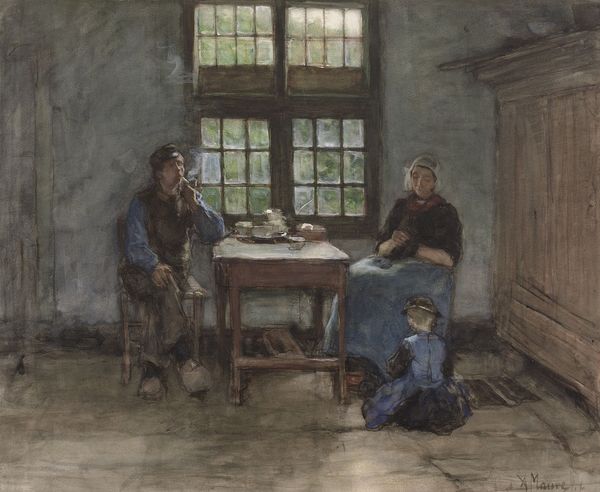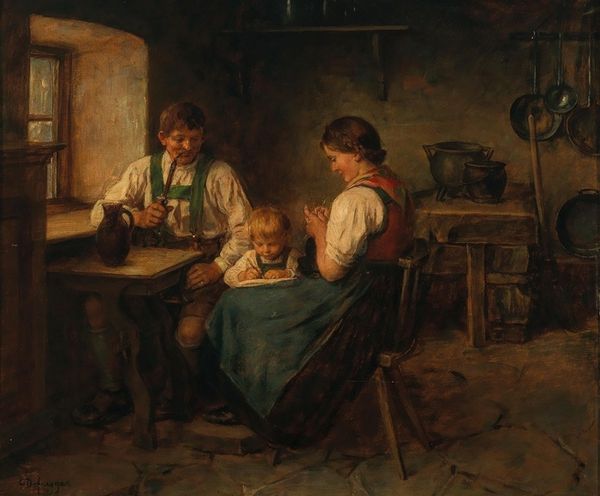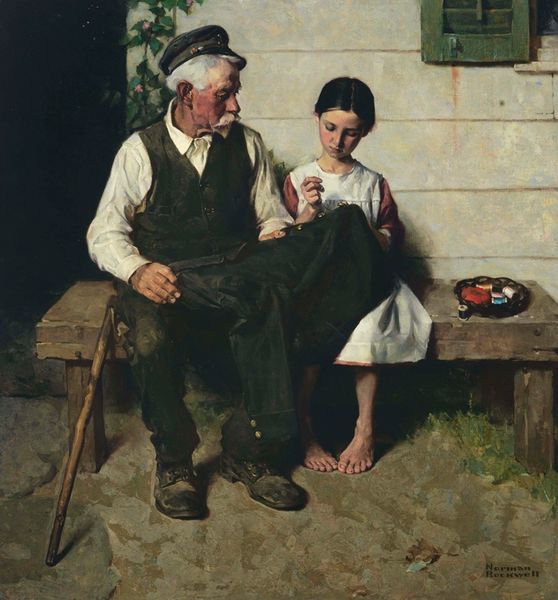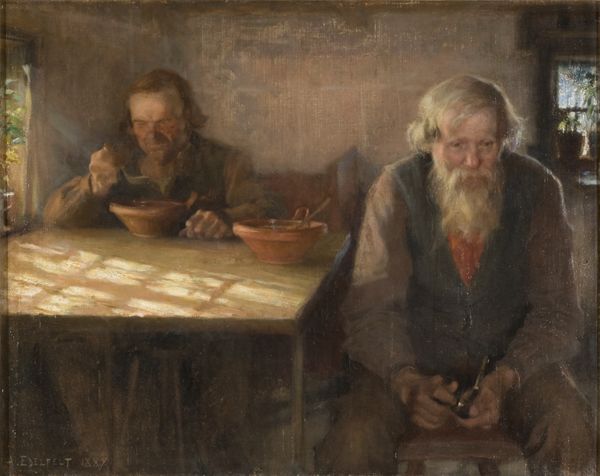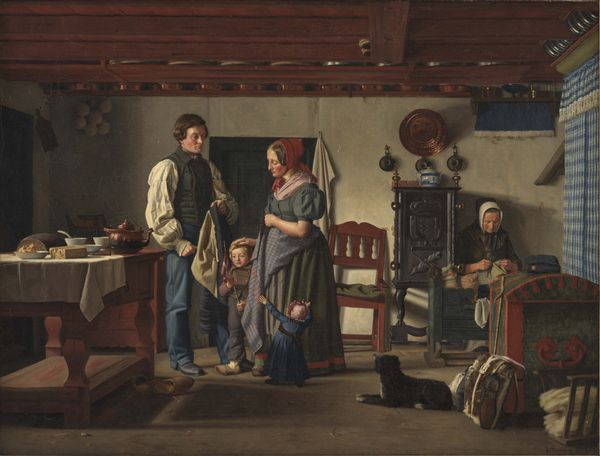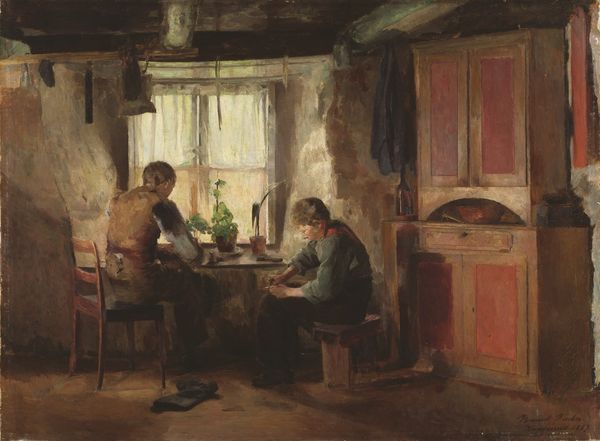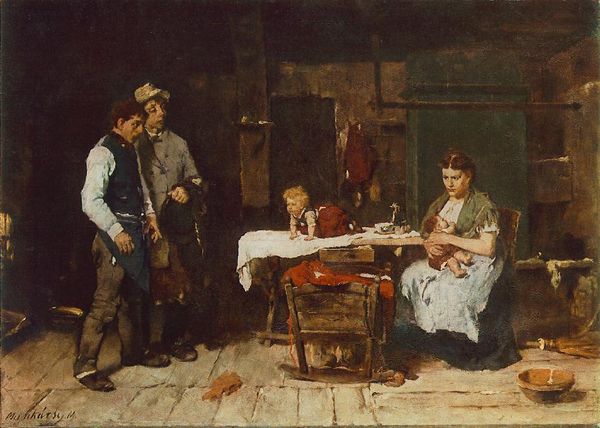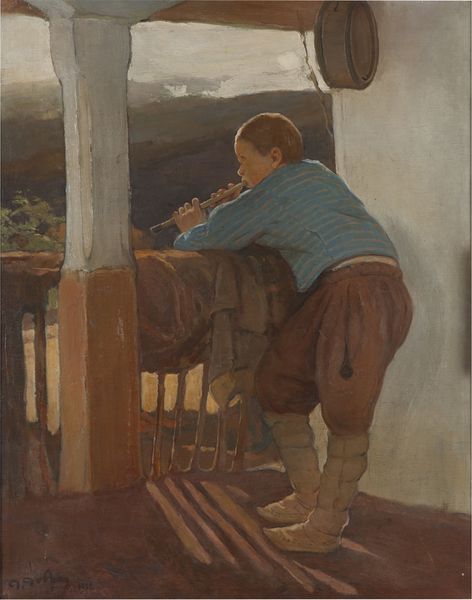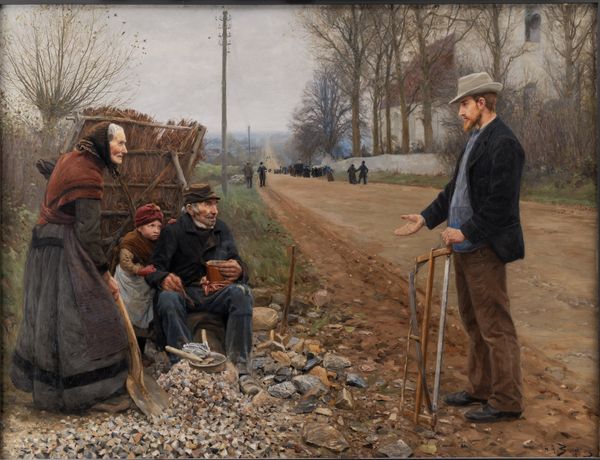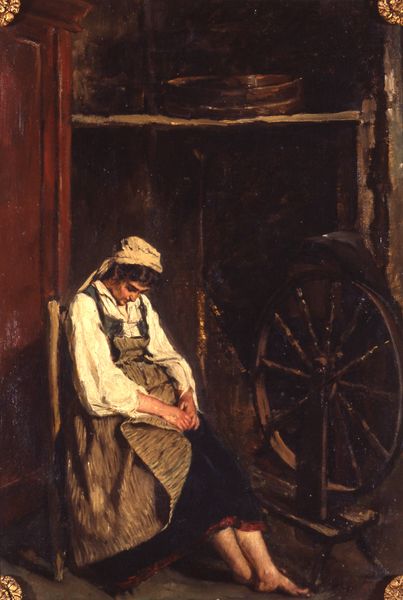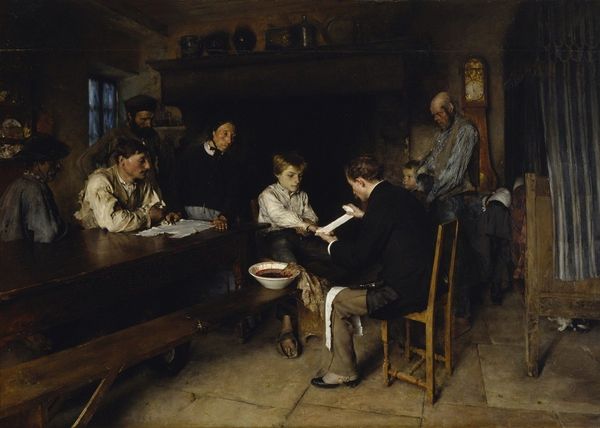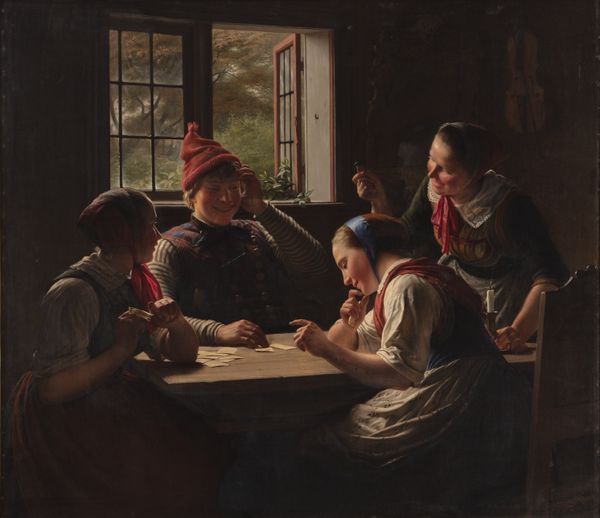
painting, oil-paint
#
painting
#
impressionism
#
oil-paint
#
men
#
genre-painting
#
history-painting
#
northern-renaissance
#
portrait art
#
realism
Dimensions: 37 × 31 7/8 in. (94 × 81 cm)
Copyright: Public Domain
Curator: Christian Krohg's 1879 painting, "The Net Mender," currently housed at the Metropolitan Museum of Art, offers a glimpse into the lives of Norwegian fishermen. Editor: It feels… lived-in. The palette is muted, almost somber, and the details—the worn wooden floorboards, the coarse fabrics—speak to a hard life. You can almost smell the brine. Curator: Absolutely. Consider the socio-political context. This was a period of significant economic hardship for many fishing communities, and Krohg, known for his social realism, was deeply invested in depicting the working class. His commitment positioned him in contrast to an art establishment often privileging only upper-class portraiture or mythological painting. Editor: You see that reflected in the way the artist renders these figures, their postures and worn hands. The focus on their work – repairing the net – feels essential. The labor itself is foregrounded; how integral that work is to their survival. The mending of the net becomes a symbol of perseverance. Curator: Indeed. Note also the role of the woman in the background, the male figure’s potential wife: although passively posed, her presence reflects the integral role that women played within these communities, supporting often through their presence at the edges of the frame – materially and emotionally. I note too her severe facial expression; how is this impacted by what her role as caretaker represents? Editor: It is a quiet resilience isn’t it? Looking at his attire, that huge fur hat, must have provided essential protection against brutal working conditions. The painting almost acts like an ethnographic record; we are placed face to face with what these workers have made, are doing, and will be doing for as long as it provides. Curator: I'm struck by the painting’s quiet dignity, a testament to Krohg's skill in portraying the humanity of his subjects, something so radically positioned as something we should even care for in painting and aesthetics in general! It's an example of socially engaged art long before the term existed. Editor: For me, it’s about the physicality. The paint itself conveys texture and the everyday environment of this family: worn but providing a foundation, reflecting how these figures relate and provide. Curator: It urges us to confront realities outside our own experiences. Editor: Exactly. An important consideration when facing work representing labour in general, not just the fishing trade!
Comments
No comments
Be the first to comment and join the conversation on the ultimate creative platform.

